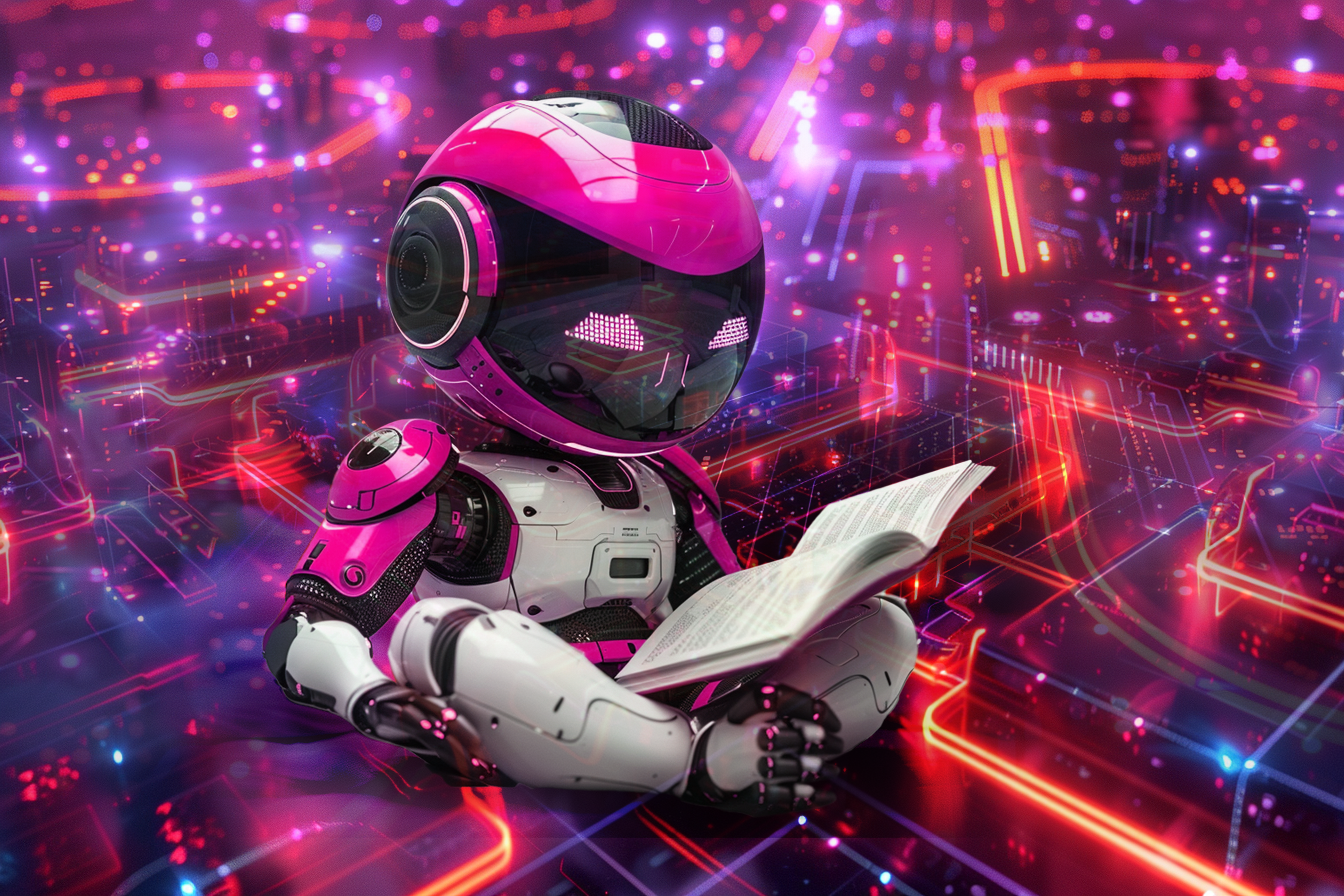Table of contents
In our latest article, we explore how AI and RAG chatbots are transforming customer service by cutting costs and improving efficiency. Businesses in telecom, banking, and e-commerce are saving millions annually by automating routine inquiries and enhancing first-contact resolution. Companies like Vodafone, Klarna and Alibaba have significantly reduced support costs while boosting customer satisfaction. With AI-driven automation offering high ROI, NexGen Labs helps businesses implement the right Generative AI solutions.
For decades, businesses have struggled to balance customer support quality with operational efficiency. Scaling support teams is expensive, response times are often inconsistent and traditional models fail to meet the expectations of today’s always-on consumers.
But RAG chatbots are turning customer service from a cost centre into a source of savings. RAG chatbots are AI assistants that use real-time data retrieval to improve responses with up-to-date and contextually relevant information. Industries like telecom, banking and e-commerce are already seeing the impact, with millions saved in support costs and measurable improvements in customer retention.
According to McKinsey, over 80% of customer care executives are already investing in AI or planning to do so in future. The question isn’t whether AI-powered customer service is the future, it’s whether businesses can afford to wait. And the answer is clear: they can’t.
In this article, we explore how RAG chatbots deliver high ROI and why investing in RAG chatbots frees up resources for strategic initiatives.
The High Cost of Status Quo vs AI Efficiency
Handling customer queries with live agents is resource-intensive. In telecom and retail contact centres, a single agent call costs $10–$14 on average and $6–$8 for a live chat. If you multiply that by millions of inquiries, the support budget will skyrocket. AI chatbots can resolve a large portion of routine questions at a fraction of the cost. An IBM report shows that chatbots can handle up to 80% of routine inquiries, cutting customer support costs by 30%. Unlike human agents, chatbots are not constrained by working hours, time zones, bank holidays or illness. They’re always on and this delivers truly “24/7 service” that increases customer satisfaction and loyalty.
If we talk about banking and healthcare, each chatbot query handled saves around 4 minutes of an agent’s time- $0.50 - $0.70 in operational cost per query, according to Juniper Research. These efficiency gains add up fast. The same research estimated that Retail, e-commerce, Banking and Healthcare saved $8 billion per annum in 2022. And just the global retail spend alone for chatbots is expected to grow to $72 billion by 2028.
Simply put, AI assistance is drastically lowering the cost-per-contact in customer service. RAG chatbots take this even further. RAG combines generative AI with live data lookup, so the bot’s answers are accurate, up-to-date and context-specific. Instead of relying only on pre-trained knowledge, a RAG chatbot can pull details from product databases, policy documents or FAQs in real time. For example, a RAG-enabled support bot can instantly retrieve a customer’s purchase history or the latest troubleshooting guide and generate a helpful answer. This boosts first-contact resolution. Your customers get precise answers without agent escalation and companies avoid unnecessary call volume. The result is higher customer satisfaction and lower support costs. A McKinsey study found that using AI-based RAG chatbots with human agents can double productivity while halving costs per call.
How Companies Saved Millions with AI and RAG Chatbots
Leading companies across different sectors are using AI and RAG chatbots to improve customer services and save their dollars. Let’s explore some of them:
Vodafone: TOBi and SuperTOBi
Vodafone teamed up with IBM to deploy a virtual agent across its markets. The AI assistant (TOBi) resolved 70% of all customer inquiries on its own, handling everything from billing questions to technical support. TOBi is trained on Vodafone’s proprietary knowledge base, so it can recognise and understand various customer queries. This deflects a huge volume of calls away from human agents.
The result? Vodafone saw a 70% reduction in cost-per-chat after implementing its AI chatbot. This means that serving customers via AI costs less than one-third of what a live chat used to cost. Such savings are enormous for an operator serving 600+ million subscribers.
SuperTOBi is another next-generation AI chatbot of Vodafone that understands and responds to complex customer inquiries faster and more effectively than its TOBi. Unlike traditional bots that rely on basic keyword recognition, SuperTOBi processes entire sentences and phrases for more natural and personalised interactions with users. This upgrade resulted in improved first-time resolution rates and higher customer satisfaction levels. Here’s how:
-
Increased First-Time Resolution Rates: In Portugal, where SuperTOBi was first introduced, the first-time resolution rate increased from 15% to 60%. This improvement reduced the need for follow-up interactions, cutting down on both labour costs and customer frustration.
-
Enhanced Customer Satisfaction: With more seamless and efficient interactions, Vodafone’s online net promoter score (NPS) jumped by 14 points, reaching 64- a strong indication of customer approval.
Alibaba Chatbots
The e-commerce giant’s AI chatbots handle 75% of online queries, saving the company ~$150 million annually. In the e-commerce sector, Alibaba has deployed one of the world’s most advanced AI chatbot systems to support buyers and sellers on its platforms. During peak shopping seasons, Alibaba’s AI chatbots field over 2 million customer sessions per day (10+ million messages), addressing 75% of all online customer questions and even 40% of hotline inquiries. By offloading repetitive service queries to AI, Alibaba saves more than ¥1 billion RMB annually – roughly $150 million in customer service costs every year. This cost reduction also resulted in a 25% increase in customer satisfaction
Klarna Chatbot
Klarna’s AI-powered assistant has delivered substantial cost savings while improving customer experience. Handling over 2.3 million conversations, the AI chatbot now manages two-thirds of Klarna’s customer service chats, significantly reducing the need for human agents.
By automating support tasks, the chatbot is performing the equivalent work of 700 full-time agents, leading to an estimated US$40 million in profit improvement in 2024. Customers can now resolve their queries in under 2 minutes, compared to the previous 11-minute average.
Klarna’s AI chatbot is on par with human agents in customer satisfaction and even outperforms them in accuracy, resulting in a 25% drop in repeat inquiries. Operating 24/7 across 23 markets and supporting 35+ languages, it also ensures seamless global customer support at scale.
High ROI and Strategic Reinvestment
Beyond direct savings, companies benefit from higher productivity and can operate with leaner support teams even as customer bases grow. RAG chatbots let you do more with less – more customer engagements handled with less spending. This means more of your resources can be redirected to strategic initiatives. Business leaders are already using this opportunity. In one survey, 34% of executives said the time saved by AI automation is now spent on “deep thinking and creating”, the kind of strategic work that drives innovation
Instead of pouring your entire budget into ever-expanding call centres, you can reinvest savings into developing new products, improving core services and training staff for higher-value roles. For example:
- A telecom operator that saves tens of millions with AI and RAG chatbots can accelerate its 5G rollout or customer analytics projects.
- An e-commerce firm that cuts support costs can improve its supply chain or marketing campaigns.
- In banking, savings from AI and RAG chatbots might be used to develop better fraud detection systems.
Most importantly, these efficiency gains don’t come at the expense of customer experience, they rather enhance it. With RAG chatbots delivering instant, accurate answers 24/7, customers enjoy faster service and greater consistency. Higher satisfaction and loyalty are a common benefit of deploying AI assistants (as seen with Vodafone’s improved NPS and Alibaba’s satisfaction boost).
Partner with NexGen Labs
AI and RAG chatbots are saving companies millions in operational costs while improving customer service. In an era where every dollar counts, RAG offers an exceptional return on investment and a strategic advantage.
Don’t get left behind as your competitors boost their customer operations with generative AI. It’s time to act. NexGen Labs, the consultancy and R&D division of NexGen Cloud offers expert guidance and cutting-edge research to help you find the right solution whether it's RAG, chatbots or custom LLMs.
FAQs
What is a RAG chatbot?
A RAG (Retrieval-Augmented Generation) chatbot combines generative AI with real-time data retrieval, ensuring accurate, up-to-date, and context-aware responses.
How do RAG chatbots reduce customer service costs?
They automate routine inquiries, reducing the need for human agents and cutting support costs by up to 30%, as seen in companies like Vodafone and Klarna.
What industries benefit most from AI and RAG chatbots?
Telecom, banking, e-commerce, and healthcare have seen major cost savings and efficiency improvements through AI-powered automation.
How do RAG chatbots improve customer satisfaction?
They provide instant, accurate responses 24/7, reducing wait times and improving first-contact resolution, leading to higher customer loyalty.
Are AI chatbots replacing human customer service agents?
No, they complement human agents by handling repetitive queries, allowing agents to focus on complex issues that require human judgment.


